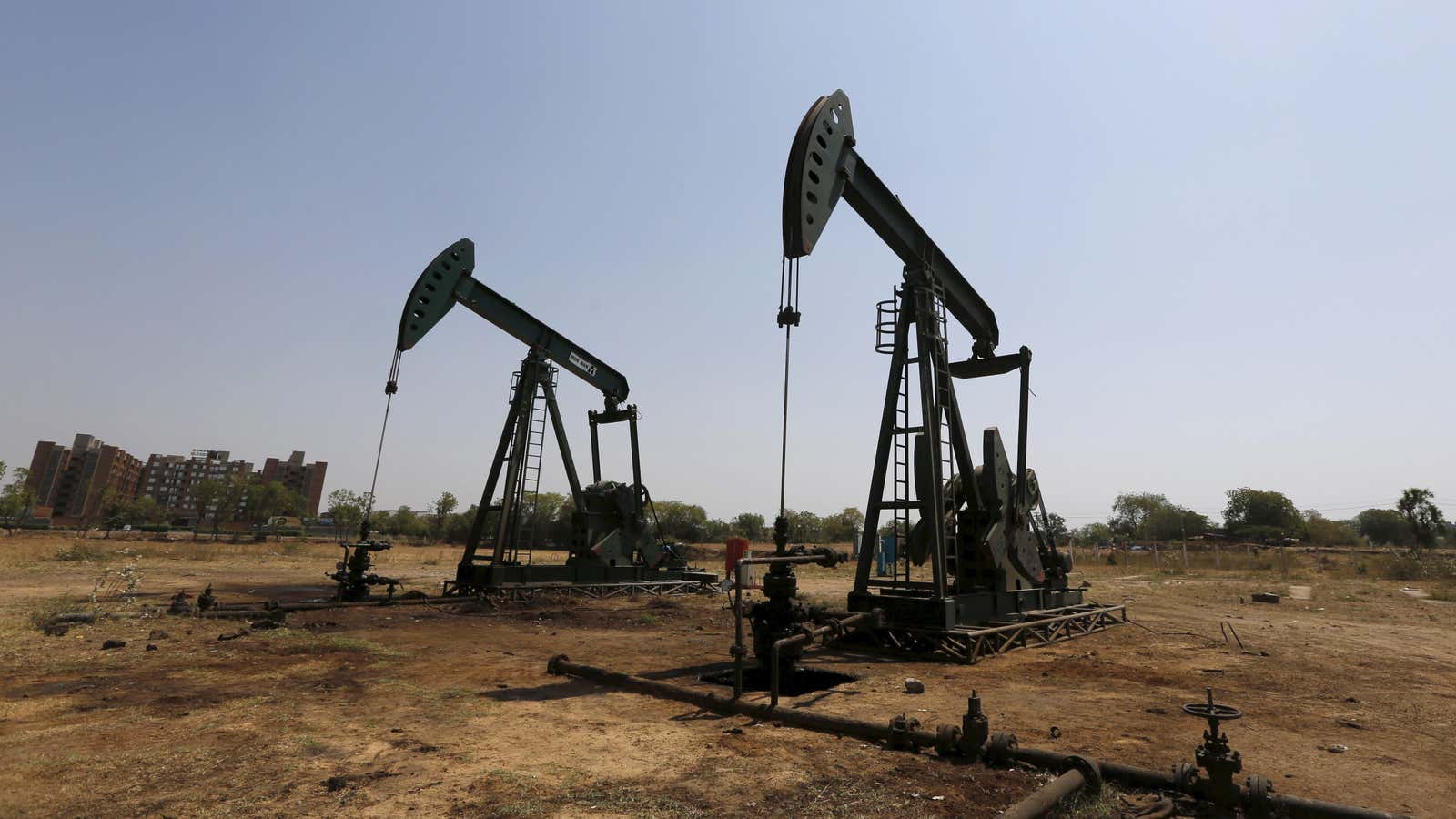India’s natural gas-based power plants have been reeling under an unexpected decline in domestic production and the high cost of imports. A parliamentary panel has now pinned the blame on the government.
Gas-based power plants in the country have an installed power generation capacity of 24.867 gigawatts (GW), over half of which is lying idle as production has been declining since the financial year ended March 2012.
For this, the parliament’s standing committee on energy’s report dated Jan. 04 has blamed the government’s unforeseen lowering of domestic production forecasts, which it says has left the gas-based power plants stranded.
“[T]hese power plants were planned with the expectation of considerable increase in the volume of domestic gas production, particularly from KG D6 field. But the projections regarding availability of domestic gas have turned out to be terribly wrong,” the report says.
The key reason for the wrong projections has been a decline in production from the Krishna Godavari Dhirubhai 6 (KG D6) gas reserve block. Situated in the Bay of Bengal, the KG D6 block is jointly operated by Reliance Industries and BP. The block was touted as India’s largest deposit of natural gas, and the government expected it to contribute up to a quarter of India’s gas supply.
But in 2012, Reliance announced a cut in the block’s estimated reserves. Steadily, gas flow has since declined to practically zero, according to the ministry of petroleum and natural gas.
In the absence of domestic production, power plants can’t import natural gas as it would more than double their costs. Cheaper tariffs from other sources of power—coal, solar, wind, and hydro—mean that the gas-based plants can’t pass on these costs without losing their competitiveness.
The parliamentary panel also criticised the government’s decisions in 2013 and 2014 to prioritise the supply of natural gas to the transport industry over power plants, which further starved them of whatever amount was being produced domestically.
“The committee are of the view that these policy flip-flops crippled the gas-based power plants consequently making them stranded,” the report says. “These plants are now unable to service their debt obligations and are on the verge of becoming NPAs (non-performing assets).”
Banks have invested about Rs50,000 crores ($7.18 billion) in these projects, according to the panel’s report. “The committee feel that since this stranded gas-based capacity involves a significant amount of public money, it can not be allowed to become junk.”
“Since these gas-based power plants were set up on the basis of the government’s assurance regarding supply of gas, it becomes incumbent upon the government to help them come out of stress,” it says.
“Prioritise, Subsidise, Regulate”
The report advocates prioritising the supply of gas to power plants. Prime minister Narendra Modi’s government is bound to find it uncomfortable as it has pushed gas as a cleaner alternative to gasoline and diesel in the transport industry.
In November, Modi had announced his vision for “a gas-based economy,” with a target of raising the number of filling stations for compressed natural gas (CNG) to 10,000 in the next decade. The country presently has 1,470 CNG stations.
His government is also under pressure to reduce India’s growing reliance on fossil fuel imports. It is unlikely that the power sector can be prioritised without hurting the targets for the transport industry while still keeping imports from rising.
The report asks the ministry of power to subsidise natural gas imports to reduce costs for the stranded plants. It cautions against ongoing discussions within the government to deregulate prices of domestically produced gas, which is currently priced according to a formula that is criticised by producers such as BP.
“The committee are of the opinion that because of shortage in availability of gas and demand being much higher than supply, the free-market pricing will result in exorbitant prices,” the report says.
In a silver lining, however, the government expects a significant jump in the domestic production of gas to over 60 billion cubic meters by the financial year 2022.
“The committee hope that this time the ministry has made a realistic assessment unlike in the case of KG D6,” the report says.
